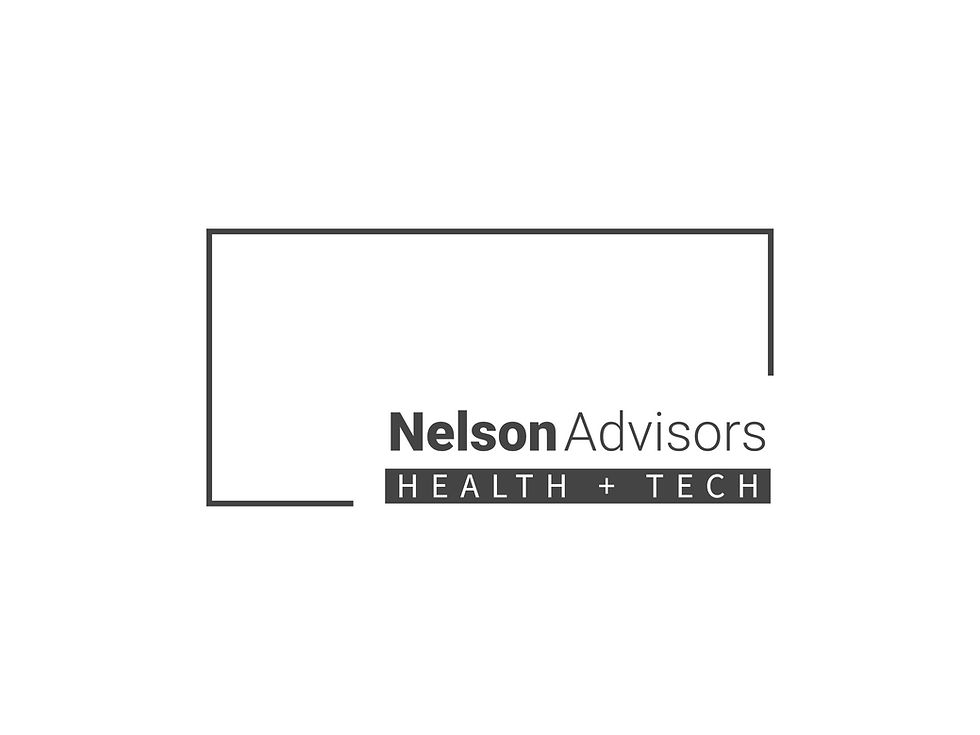Re-bundling into Digital Health Platforms replaces Un-bundling into Point Solutions trends in 2024
- Lloyd Price
- Oct 7, 2024
- 6 min read

Exec Summary:
In 2024, the digital health landscape witnessed a significant shift from un-bundling into point solutions to re-bundling into digital health platforms.
Understanding the Shift
Un-bundling: This trend involved breaking down complex healthcare services into smaller, more specialised point solutions. For instance, a patient might use a separate app for tracking blood pressure, another for scheduling appointments, and yet another for managing medications.
Re-bundling: In contrast, re-bundling involves integrating multiple point solutions into a single, cohesive platform. This platform offers a more comprehensive and streamlined experience for patients and providers.
Reasons for the Shift
Complexity Reduction: Patients often found managing multiple point solutions to be overwhelming. Re-bundling simplifies the healthcare experience.
Data Integration: Digital health platforms can integrate data from various sources, providing a more holistic view of a patient's health.
Enhanced Patient Engagement: A unified platform can improve patient engagement by offering personalised recommendations and reminders.
Cost-Efficiency: While initial development costs might be higher, re-bundling can lead to long-term cost savings by reducing administrative burdens.
Examples of Re-bundling Trends
Super-Apps: These platforms combine multiple healthcare services, such as telemedicine, medication management, and health monitoring.
Health Management Platforms: These platforms offer comprehensive health management tools, including fitness tracking, nutrition guidance, and mental health support.
Chronic Disease Management Platforms: These platforms are tailored to specific chronic conditions and provide personalised care plans, medication reminders, and community support.
In conclusion, the shift from unbundling to re-bundling in digital health reflects a growing emphasis on providing a more integrated and patient-centric healthcare experience. As technology continues to advance, we can expect to see even more innovative and comprehensive digital health platforms emerging in the years to come.
Nelson Advisors work with Founders, Owners and Investors to assess whether they should 'Build, Buy, Partner or Sell' in order to maximise shareholder value.
Healthcare Technology Thought Leadership from Nelson Advisors – Market Insights, Analysis & Predictions. Visit https://www.healthcare.digital
HealthTech Corporate Development - Buy Side, Sell Side, Growth & Strategy services for Founders, Owners and Investors. Email lloyd@nelsonadvisors.co.uk
HealthTech M&A Newsletter from Nelson Advisors - HealthTech, Health IT, Digital Health Insights and Analysis. Subscribe Today! https://lnkd.in/e5hTp_xb
HealthTech Corporate Development and M&A - Buy Side, Sell Side, Growth & Strategy services for companies in Europe, Middle East and Africa. Visit www.nelsonadvisors.co.uk

Shifts from Un-Bundling to Re-Bundling in Digital Health
The shift from un-bundling to re-bundling in digital health platforms is a complex trend with several factors driving it:
1. Increased Complexity of Care:
Chronic diseases: The rise of chronic diseases requires ongoing management and coordination of care, making it difficult to manage with point solutions.
Personalised medicine: Tailored treatment plans based on individual patient data necessitate integrated platforms to track and analyse information.
2. Improved Patient Experience:
Seamless care: Re-bundling eliminates the need for patients to navigate multiple systems and providers.
Enhanced communication: Integrated platforms facilitate better communication between patients, providers, and caregivers.
3. Cost Reduction and Efficiency:
Elimination of redundancies: Re-bundling can reduce administrative burdens and avoid duplicative efforts.
Data sharing and analytics: Sharing data across platforms enables better decision-making and resource allocation.
4. Technological Advancements:
Cloud computing: Cloud-based platforms offer scalability and flexibility.
Interoperability: Standards and APIs are making it easier to connect different systems.
5. Regulatory Changes:
Value-based care: Governments and payers are incentivising providers to focus on outcomes rather than volume, driving the need for integrated care.
6. Market Consolidation:
Mergers and acquisitions: Healthcare organisations are consolidating to gain scale and market share, often leading to the adoption of integrated platforms.
7. Patient Engagement:
Empowered patients: Patients are increasingly demanding more control over their healthcare, and re-bundling can empower them with personalised tools and information.
However, the transition to re-bundling is not without challenges:
Interoperability issues: Ensuring seamless data exchange between different systems can be complex.
Legacy systems: Upgrading or replacing outdated systems can be costly and time-consuming.
Data privacy and security: Protecting patient data is a major concern, especially with the increasing use of digital platforms.
Overall, the trend towards re-bundling in digital health platforms is driven by a combination of factors, including improved care quality, patient experience, cost reduction, and technological advancements. While challenges remain, the potential benefits of re-bundling make it a compelling trend for healthcare providers and patients alike.

HealthTech companies un-bundling the value chain
HealthTech companies have indeed been instrumental in unbundling the value chain of traditional healthcare. By focusing on specific challenges and delivering tailored solutions, they've been able to offer superior experiences to both patients and providers.
Here are some key ways HealthTech companies have unbundled the value chain:
Specialisation: HealthTech startups can focus on niche areas within healthcare, such as telemedicine, remote patient monitoring, or mental health, allowing them to develop deep expertise and innovative solutions.
User-Centric Design: HealthTech companies often prioritise user experience, ensuring that their products are intuitive, easy to use, and meet the specific needs of patients and providers.
Efficiency and Cost-Effectiveness: By automating processes and reducing administrative burdens, HealthTech solutions can improve efficiency and help lower costs for both patients and healthcare organisations.
Accessibility: HealthTech can make healthcare more accessible by breaking down barriers such as geography, time, and cost. For example, telemedicine can connect patients with specialists who may be located far away.

Re-bundling Point Solutions into Digital Health Platforms: A Trend Analysis
The shift from unbundling point solutions to re-bundling them into larger digital health platforms is a significant trend in the healthcare industry. This trend is driven by several factors, including:
1. Enhanced Patient Experience:
Seamless Care: A single platform provides a more cohesive and seamless care experience, reducing the need for patients to navigate multiple systems.
Personalised Care: Platforms can leverage data from various sources to offer personalised recommendations and treatment plans.
2. Improved Care Coordination:
Centralised Information: A unified platform can centralise patient information, making it easier for healthcare providers to coordinate care.
Reduced Errors: By minimising data silos, the risk of medical errors can be reduced.
3. Increased Efficiency and Cost-Effectiveness:
Streamlined Processes: Digital health platforms can automate administrative tasks, leading to increased efficiency and reduced costs.
Enhanced Outcomes: By improving care coordination and patient engagement, platforms can contribute to better health outcomes.
4. Data-Driven Insights:
Valuable Data: Platforms can collect and analyse vast amounts of data, providing valuable insights for research, quality improvement, and population health management.
Examples of Re-bundling Trends:
Super-Apps: These platforms combine multiple healthcare services, such as telemedicine, medication management, and health monitoring.
Chronic Disease Management Platforms: These platforms are tailored to specific chronic conditions and provide personalised care plans, medication reminders, and community support.
Health Management Platforms: These platforms offer comprehensive health management tools, including fitness tracking, nutrition guidance, and mental health support.
While re-bundling offers many benefits, it's important to note that challenges may arise. These include ensuring data privacy and security, maintaining platform interoperability, and addressing potential regulatory hurdles.

The Future of Re-bundling into Digital Health Platforms
The trend of re-bundling point solutions into digital health platforms is likely to continue and expand in the coming years, driven by several factors:
1. Technological Advancements:
Artificial Intelligence (AI): AI will play a crucial role in enabling platforms to provide more personalized and predictive care.
Internet of Things (IoT): IoT devices will generate vast amounts of health data, which can be integrated into platforms to offer more comprehensive insights.
2. Regulatory Support:
Government Initiatives: Governments worldwide are increasingly investing in digital health and implementing supportive policies.
Interoperability Standards: The development of interoperability standards will facilitate the integration of data from different systems.
3. Consumer Demand:
Convenience and Accessibility: Consumers will continue to demand convenient and accessible healthcare options, driving the adoption of digital platforms.
Personalised Care: Patients will increasingly expect personalised care experiences, which can be enabled by digital health platforms.
4. Value-Based Care Models:
Outcome-Based Payment: The shift towards value-based care models will incentivize the use of digital health platforms to improve outcomes and reduce costs.
Potential Challenges and Opportunities:
Data Privacy and Security: Ensuring the privacy and security of patient data will remain a critical challenge.
Interoperability: Developing and maintaining interoperability standards across different platforms will be essential.
Regulatory Compliance: Adhering to evolving regulatory frameworks will be crucial.
Physician Adoption: Encouraging physician adoption of digital health platforms will be key to their success.
Overall, the future of rebundling into digital health platforms looks promising. As technology continues to advance and regulatory frameworks evolve, we can expect to see even more innovative and comprehensive platforms emerging. These platforms will play a vital role in improving healthcare access, quality, and affordability.
Nelson Advisors work with Founders, Owners and Investors to assess whether they should 'Build, Buy, Partner or Sell' in order to maximise shareholder value.
Healthcare Technology Thought Leadership from Nelson Advisors – Market Insights, Analysis & Predictions. Visit https://www.healthcare.digital
HealthTech Corporate Development - Buy Side, Sell Side, Growth & Strategy services for Founders, Owners and Investors. Email lloyd@nelsonadvisors.co.uk
HealthTech M&A Newsletter from Nelson Advisors - HealthTech, Health IT, Digital Health Insights and Analysis. Subscribe Today! https://lnkd.in/e5hTp_xb
HealthTech Corporate Development and M&A - Buy Side, Sell Side, Growth & Strategy services for companies in Europe, Middle East and Africa. Visit www.nelsonadvisors.co.uk


















































Comentarios